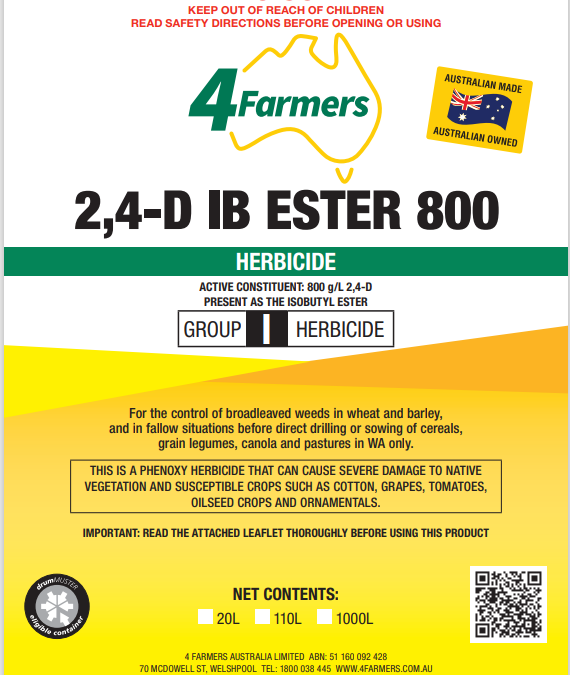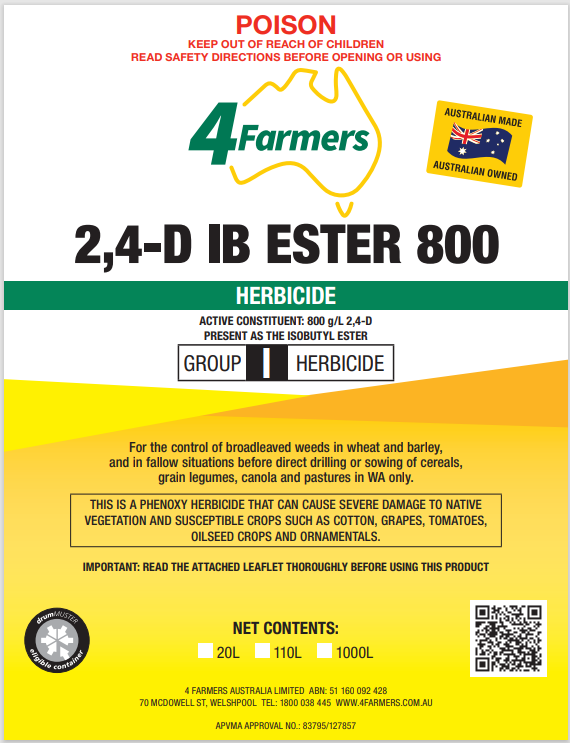Exciting news! One of the most popular knock down herbicides is back!
In spite of dumping duties and other barriers 4Farmers 2,4-D IB Ester 800 is expected to be available again this summer. However, farmers need to be getting prepared now with orders so they don’t miss out.
Why HV Ester 800 is so Good
Amine formulations are water based and are slow to penetrate the waxy coating on leaves. Esters on the other hand have a solvent base that can break through waxy leaves more easily.
High volatile esters (HVE’s) are superior to low volatile esters (LVE’s) because the chemical composition of HVE’s allow them to be more rapidly absorbed than LVE’s.
Also the vapour created by HVEs means weeds can be killed without even having droplet contact which is great if there are stubbles or other shadowing in spray coverage.
Vapour Damage Exaggerated
The two ways chemicals can leave a site after application is drift in small droplets or vapour. Droplet drift is quite manageable. Vapour drift can be more problematic thus the scrutiny on HVE’s.
John Moore (Dept Ag & Food WA, 2008) in a review of 2, 4-D ester formulations concluded how few substantiated cases of off target damage due to 2, 4-D vapour there was in spite of despite popular opinion.
John found that vapour drift was highly localised Vapour drift he found was appeared localised and there was more chance of farmers incurring damage due to poor droplet management. Extremely low level Low concentrations of vapour might move many kilometres but there was no evidence that these were damaging to plants.
IBE Formulation Superior
Ester 800 can be made from either of two different two active constituents; Isobutyl Ester (IBE) which is what 4Farmers product is made from, or Ethyl Ester.
The advantage of 4Farmers Ester 800, formulated using IBE, is that it still creates vapours but they are less volatility than Ethyl Ester. Therefore further mitigating the concerns people may have about damaging vapours moving off site.
Ester 800 Increases Canola Yield
To put the potential effect of damage to neighbouring susceptible crops into perspective it should be understood that low doses of chemical might show signs of damage but this does not mean final yields are affected.
With Ester 800 on Canola for example, John Moore points out that the data suggests very low doses at early stages are actually more likely to increase yields before yields reduce, and higher rates eventually kill a plant.


